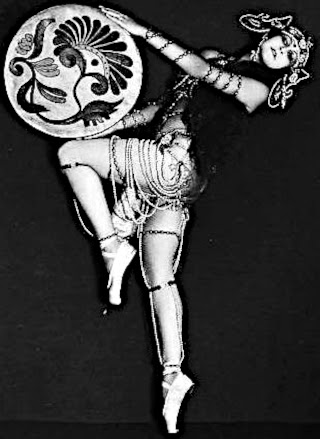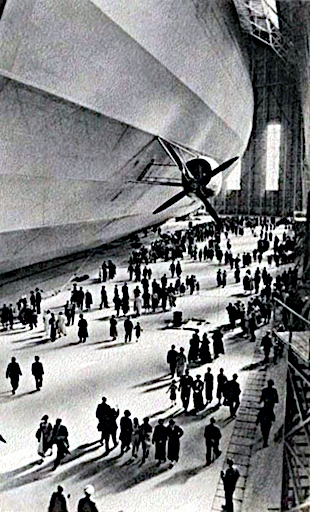A Japanese friend who lives and works outside Tokyo sent this description of life in Japan from 1989 to 2009. He thought it might be of interest to our patrons.
In considering prices, it is a good shorthand to think of 100 yen as $1 US. I thought that this was funny because this is the same shorthand price I used when I was working in Japan in the late 1990's.
My friend's opinions are his own.
In the inflation/deflation debate, I think what most people mean is "their own personal cost of living", in view of income, rather than a macroeconomic concept.
Pay, job availability, and expense accounts were nuts 1990 to 1995. Everyone was partying... all week long... Wednesdays were as busy as Fridays and Saturdays. Fun while it lasted, but was everyone actually better off at the time? I guess just more hungover and with more handbags.
Prices were often exaggerated in the media because, well, normal prices have no entertainment value. Of course you can find $200 a pound Kobe beef in high end stores like Isetan downtown, but who actually buys that? Even during the bubble, almost no one. Beef in a normal supermarket was and is about $5 a pound, very high quality, and might be half off at closing time.
Change 0%.
At the local greengrocer, vegetables, like a bag of three carrots, a head of cabbage, or broccoli, was 100 yen 20 years ago, and is 100 yen now. I would say on the whole, in yen terms, that overall food prices have not changed. A nice large whole mackerel, cleaned and salted and ready for the grill, enough for two people, is 100 yen. Tofu is 50 yen a block, 150 yen for premium kinds. A pot of premium Japanese rice is 100 yen, enough for six servings.
Change 0%.
One of the things I notice when I go to the US is that there is almost always only high fructose corn syrup colored water to drink. In Japan, there is almost none of that. 90% of what is on the shelf, even in a convenience store, is 100% fruit and vegetable juice for about 100 yen a carton/bottle... in other words, the same price as a coke. I think at least some of the health problems in the US are due to simple things like that.
Long distance calls went from about 100 yen a minute to 3 yen per minute via internet telephony using, for example, Yahoo Japan broadband. From around a decade ago, you could just pick up a Yahoo broadband modem while walking through a train station, take it home, plug it into the telephone jack, plug your phone into the modem, and suddenly all your calls were 3 yen a minute all day every day to most countries. I did not know at first about the telephony as I was only interested in the broadband. One day, I realized that I had not gotten a long distance bill in quite some time. I made many calls around the holidays, so was bracing for a $500 bill. Instead, there was a $15 charge on my credit card.
A decade ago, the modem was free, the broadband was 6M, and it was $20 dollars a month with the first 3 months free. Currently, the minimum is 8M for about $20 dollars a month. Skype has unlimited worldwide calling for a flat $10 a month. I think this has saved me about $20,000 over the last decade. NTT is very unhappy. New apartments now often include free broadband via optical fiber or cable at 100M.
Change (for me) -90%.
Transportation prices have not changed much in 20 years. As was the case from 50 years ago, your employer will pay for your bus/train pass to go to work up to $800 per month, and you can use the pass to get off at any station in between. Even if you bought the pass yourself, to commute say 10 miles, the pass would be about $150 per month. AAA says to own and operate a new car in the US costs about $800 a month, $9,000 per year, and even if you drive your car until it dies, I think it still costs about $5,000 per year. Most people do not need a car, or have at most one for outings on the weekend.
Savings from free pass, no need for car, $5,000+ per year.
Trains are much safer than cars, and if the Japanese drove as much as Americans, there would be about 10,000 more fatalities per year. Over the last 20 years, there are 200,000 Japanese wandering around unaware that had they been driving like Americans, they would be dead. And many many more injured. If you want to be an actuary about it, assuming as in the US that a death in a law suit is roughly worth one million dollars, that is a benefit of 200 billion dollars, and untold billions less in hospital care, injury, disability, and misery.
Change 0%
A functioning train system means people actually walk 5 or 10 minutes to go to the station. Exercise automatically included, and another simple thing that could improve health in the US. (Every major city in the US used to have rail systems until General Motors and the oil companies and the tire companies bought them and ripped them out so everyone would be forced to buy cars and municipalities would be forced to buy buses. Rigging the system is far from new.)
Another reason you do not need a car here is that the home delivery system is terrific. You can send a box or suitcase anywhere in Japan within two days for less than $20. They will pick it up at your house, or you can send it from any convenience store, and you can specify the day and hour of delivery. Costco has solved the problem of customers needing a car to shop. Delivery of a box, up to 60 pounds, anywhere in Japan, is $6 (That is not a typo. You could send a 60 pound box from Costco in Hokkaido to Nagasaki in Kyushu, a distance of 1,000 miles, for 6 dollars). I shop for me and my friends, divide up the goods into boxes, and just send the boxes to them.
Costco did not have stores here 20 years ago, so hard to say, but I guess:
Change -60%.
WalMart has come to Japan by partnering with Seiyu. This and the proliferation of 100 yen shops (dollar stores) drove prices way down. Goods might be in some cases of lesser quality, but since the price can be 90% off, fine with me. A hammer to pound in a few nails is 100 yen, whereas before it would have been 2,000 yen for one of unnecessarily high quality. Even things like brand name high end shampoos at drug stores have come down by half or more.
On the whole, I would say the cost of dry goods has come way down.
Change -50 to -90%.
National health care is about $3,000 per person per year. No preexisting conditions are ever excluded. You can go to any doctor you wish. There is usually no waiting, so for routine things, people do not even make appointments.
Change 0%.
Energy efficiency has become a mania. From years ago, when Koizumi said "global warming", what he meant was "The cheap oil is running out! Get the energy efficiency up... now!"
Japan Railways cut energy use in new trains by half.
Compact fluorescents were great, but expensive ($10), from a decade ago, but are about to be superseded by LEDs.
LEDs are marketed showing that although they cost $40, they last for 40,000 hours, and you would have to buy 40 incandescents for that period of time, so at 99 cents per bulb, the price is actually the same. The LEDs use 1/10th the electricity. 2 yen per hour; in the US 1 cent per hour. Over 40,000 hours, an incandescent would use $4,000 in electricity, an LED $400. They clearly make economic sense now, and the transition is starting. They are a little dim, but fine for lights you leave on all the time like on the porch. Performance should improve and price of an LED light bulb should drop to about $10 in a few years.
New air conditioners use as little as 6 yen per hour (electricity is 20 yen per kilowatt-hour), so in the US, at an average of 10 cents per kilowatt-hour, that would be 3 cents per hour to run the air conditioner (they are all reversible heat pumps, so also warm in winter), so about $20 per month. Typical cooling August and September with older units like mine is $50 per month, heating December to March about $50 per month.
Change -50 to -90%.
Water is about $20 per month.
Change 0%.
Rent is $700 and up for 600 square feet, depending mostly on distance from downtown, type of building (wooden or concrete) and distance to the train station.
Change -20%.
Per capital floor space in Tokyo has doubled, mostly due to improved construction techniques that allow tall buildings to be built on deep soil, where it would have been previously cost prohibitive, by simply driving the pilings deeper into the soil. This in turn was made possible by Japanese steel manufacturers figuring out how to make super strong structural steel for the same price as regular steel simply by minimizing the energy it takes to process the steel. As in Manhattan, skyscrapers were concentrated where there were granite outcrops. Not any more. You can build tall buildings anywhere for a reasonable cost, and the Ginza 10 story limit is about to go. This should continue to put a lot of downward pressure on real estate prices and rents.
Change 0% to -50%.
Many of the above prices are in yen, as would be experienced by someone working and living in Japan. From 1989 to the present, very roughly, the yen went from 150 to the dollar to 100 to the dollar, with a lot of ups and downs. Although the yen appreciated, there was generally no inflation, and no increase in pay per hour (although the amount of work went down), so if you have a job, things just seem to be mostly unchanged over the last two decades. Although much reference is made to Japan's "lost decades", had you actually lived here and not read the newspaper or watched TV, you would have had no idea that anything bad was happening. There are still almost no vacant stores. Visitors said "Recession? What recession?" It is not at all like New York in the 70s.
What is confusing if you are looking at Japan from the outside is that while prices in yen have basically not changed for 20 years, because the yen increased by 30 to 50% against most currencies, the nominal price as viewed in dollars, pounds, etc., has gone up. However, there has been inflation outside Japan, so that is confusing. When I see salaries in the US, etc., now, I think, "Huh? They pay that much?" But of course, the prices of goods in those countries have gone up.
Using money as a proxy for goods and services is very confusing. The real question is, assuming one has a reasonable amount of work at reasonable pay per hour, what goods and services and of what quality can you get? On the whole, I would say that that has improved, some of the improvement being inherent in improved technology, building construction, etc., some of the improvement from better distribution and competition among retailers, some from the stronger yen, some from energy efficiency and improvements in public transportation. What we want is food, a place to live, electricity, water, telecommunication, education, and health care. If you have those things, you don't really need much money.
In summary, you could expect to live reasonably, within 20 minutes of downtown Tokyo by train on the following annual budget.
Rent $10,000 (60 square meters, 600 square feet)
Health insurance $3,000
Food $3,000 (if you cook yourself most of the time)
Electricity (heating and cooling included) $1,000
Water $300
Gas $300
Telephone and broadband $700
Transportation $1,000 (free $1,000 employer provided train pass + $1,000 incidental travel by train, taxi, bus; $8 buys pass for unlimited travel for one day on most subways throughout Tokyo)
(Car unnecessary -$5,000 to -$9,000)
National income tax + local income tax = US federal tax rate.
Consumption tax is 5% on all purchases and most restaurant meals.
Average salary is about $50,000.




















































